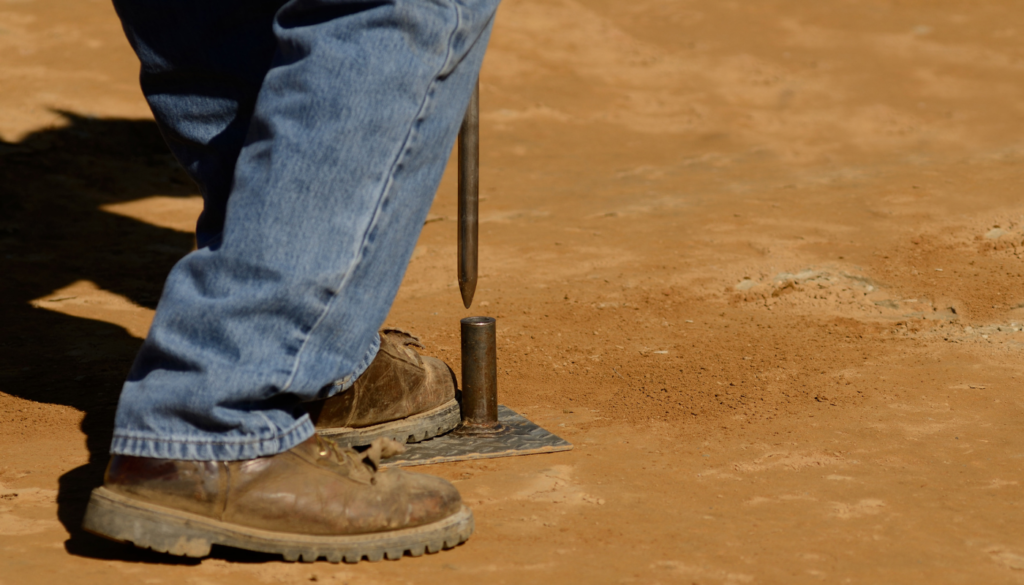
A proofroll measures the deformation of sub-grade, which is typically done using a tandem axle dump truck. On most occasions, a proofroll is performed after density tests have been performed on sub-grade. A proof roll gives the inspector a thorough analysis of the sub-grade, instead of a pin point test location.
Unfortunately there is no ASTM standard for this procedure, which often leaves this procedure to personal judgement. Some projects will identify a certain amount of deflection and/or rutting in their project specifications, but on many occasions it is not specified. If specified, specifications will often require a fully loaded semi with gross weights that could range anywhere between 20 to 25 ton. Specified deflection often ranges between no deflection to 1 inch deflection.
During a proofroll, the inspector should have marking paint with them to identify unstable sub-grade locations. Once unstable locations have been identified, the inspector should observe unstable sub grade soils using a hand auger to determine the compressive strength and depth of unstable soils. The observations and data should be reported to the geotechnical engineer.







